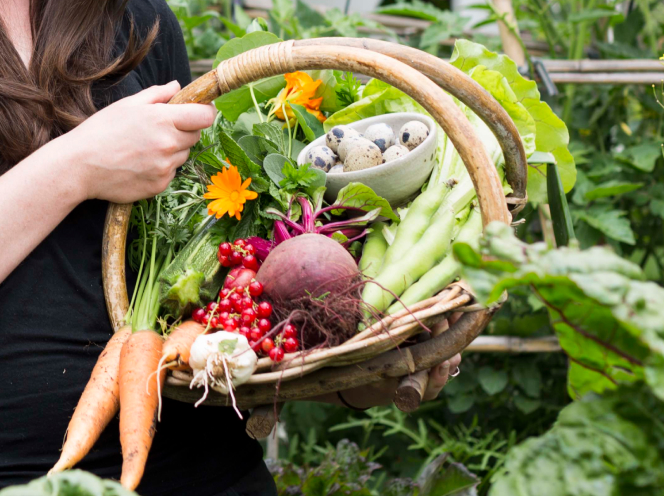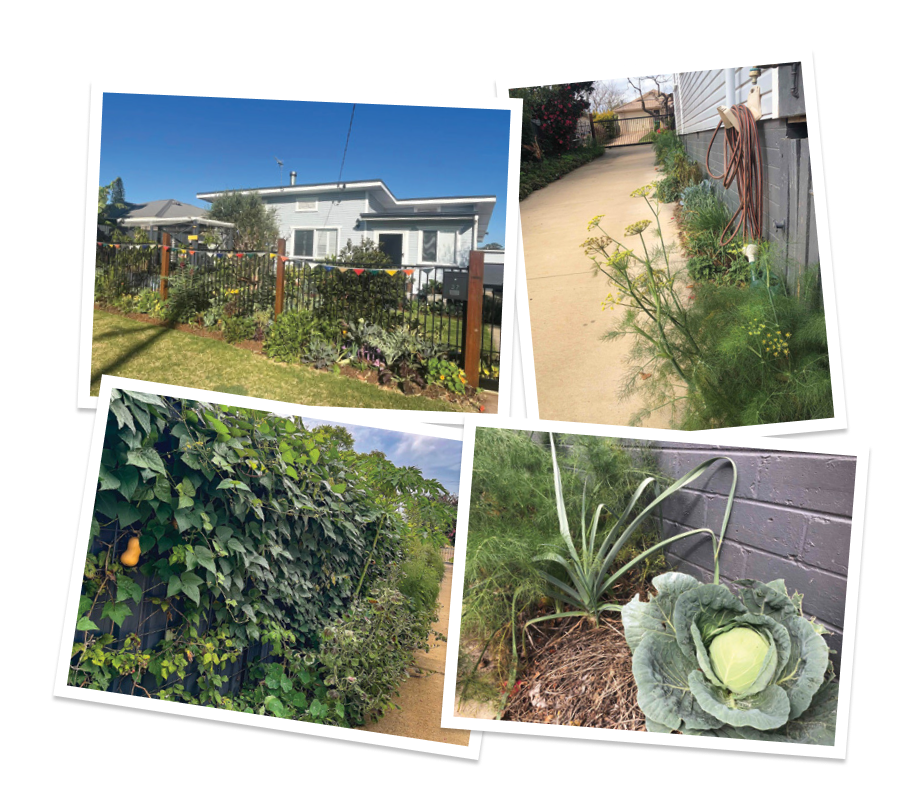
6 minute read
From little things
We’ve all heard of tiny houses, but tiny gardens are a thing too
Think you don’t have enough time or space to grow your own vegies? You might want to check out The Plummery, an inner-Melbourne garden project that churns out enough fresh produce to feed two adults on a tiny 280sqm block – and yes, that includes the house.
What’s more, the woman behind the garden, Kat Lavers, reckons it’s all done on about four hours of work a week.
To be fair, Kat is no amateur. She is a professional permaculture designer and educator who set out to demonstrate that small, often-overlooked, suburban spaces can be hugely productive if we re-think the way we use them. In just 12 months, she harvested 428kg of herbs, fruit, vegetables and quail eggs from her 10sqm garden – an area that was previously just lawn.

That’s a pretty high bar. But don’t be daunted. Kat herself describes The Plummery as an experiment that prioritises productivity. But planting an edible garden can be about much more than just putting food on the table.
There’s a growing body of scientific evidence that spending time in green spaces has significant physical and mental health benefits. So much so that the UK’s National Health Service launched a program in 2021 called Green Social Prescribing that encourages doctors to refer patients to gardening groups.
Suburban gardens can also help build a sense of community. Toowoomba gardener Kushla Gale hoped to meet neighbours and share her passion for home grown produce when she planted out a little 50cm footpath strip outside her Queenslan home, encouraging passers-by to help themselves to the fresh vegetables, fruit and herbs.
Surrounded by new unit developments, Kushla is one of an increasing number of Aussie homeowners who have set up verge vegie patches to share their gardens and encourage residents to get out and about in their communities.
The colourful garden ended up wowing judges at Toowoomba’s famed Carnival of Flowers last year, taking out second place in the Footpath Garden section, a category usually dominated by ornamental displays. One judge commented her little footpath demonstrated “You don’t need acreage to be able to grow your own fresh organic produce.”
By switching out ornamental plants in favour of edible plants – even in small spaces – both Kushla and Kat hope to shift the dial on traditional ideas of what suburban gardens can be.
“I thought, ‘if I’m going to invest in buying plants, why not have things that are productive as well,’” says Kushla, who, apart from her footpath garden, has also planted out her 700sqm block with eye-catching and unusual plants that can be eaten. There are mango and banana trees, purple peas, red eggplants, strawberry guavas, striped tomatoes and cranberry hibiscus.
“I like to plant interesting food – things you can’t find in the supermarket,” she says, emphasising the fun factor of an edible garden that’s also a treat for the eyes.

Spring Tips
Whatever your motivation, now is the perfect time to get out in the garden and plant some plants to eat. Kat and Kushla share their top tips.
Start small: Don’t set yourself up to fail by being overly ambitious. “One of the best things you can do if you’re getting started is to start really small,” Kat advises. “Start with a square metre and look after it. You’ll actually get more produce out of a smaller garden that you’re managing and tending well than you will out of a huge garden that runs away.”
Use overlooked spaces: When Kushla had a new driveway put in, the concreter eyed the narrow gap alongside and said, “Just put in some mondo grass – that’s the solution.” “I laughed and thought, ‘you don’t know me,’” she says. That 20cm sliver of garden now produces fennel, cabbage, capsicum, tomatoes, peas, chives, chamomile and leeks. It’s a similar ethos to her award-winning footpath garden, which demonstrates the huge potential of often-forgotten spaces.
Know yourself and your garden: Just as you should take time to watch how the sun moves across your garden, also understand how you will move around your garden. Put plants that will require the most care, or that you will use most often (such as herbs and vegetables), in areas you walk past frequently. A vegie patch at the bottom of the garden is likely to be neglected, because out of sight is often out of mind when it comes to watering, weeding and pest control.
Embrace multi-function: Deciduous fruit trees (such as plum, persimmon and quince) can provide shade and wind protection for vegie patches (or homes) in summer. In winter, these trees lose their leaves and allow much-needed sunshine to flood in.
Keep it simple: “I work full time. I’m a careless gardener. I forget to water,” Kushla admits. “So, things have to be tough to survive in my garden.” Low-maintenance, pest-resistant, drought-tolerant plants are a priority. She also opts for produce that doesn’t need to be picked immediately, so it can sit on the tree or vine until she needs to use it.
Join a garden group: “If there isn’t one to join, start one,” says Kushla, who is passionate about the social upside of gardening. Groups are a rich source of friendships and members are usually very generous when it comes to sharing seedlings and cuttings.
Stagger plantings: Avoid ending up with a mountain of produce one week and nothing for months by planting vegie beds out at intervals. Staggering plantings not only eliminates the pressure of planting out an entire bed in one weekend, but it also helps keep your garden in a continuous cycle of production.
Build watering and weeding into your day: Kat says she often makes phone calls to friends and family while she is doing mundane tasks such as picking slugs from her vegies, so she can cultivate her relationships at the same time as her garden.
For more tips on planting, pests or garden design see some of Kat’s videos online at www.katlaver.com/blog
Kushla’s footpath garden at 37 Gordon Ave, Newton is part of the Toowoomba Carnival of Flowers Open Gardens from September 2029, or visit her Facebook page at Toowoomba Edible Garden.



